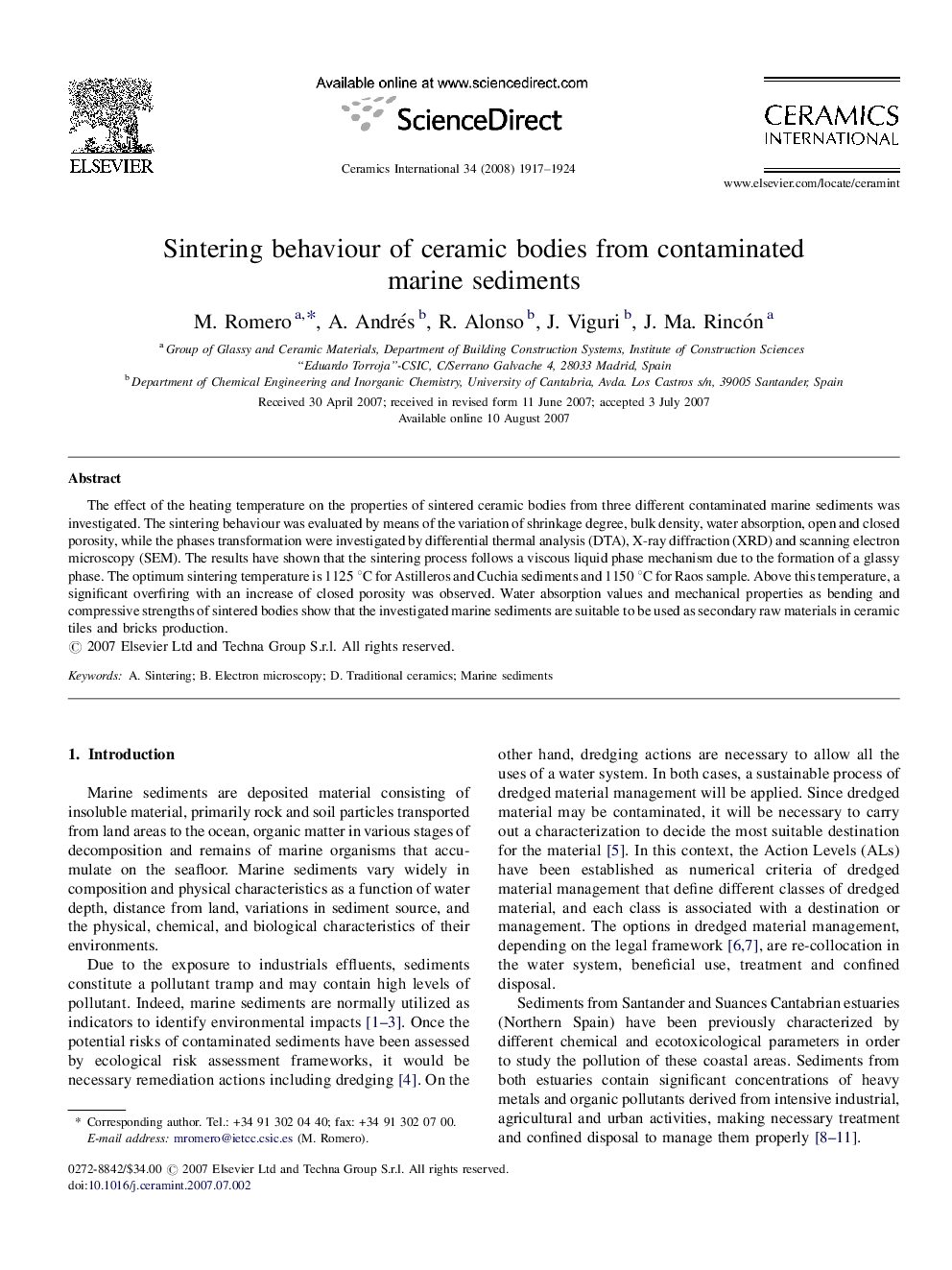| Article ID | Journal | Published Year | Pages | File Type |
|---|---|---|---|---|
| 1464342 | Ceramics International | 2008 | 8 Pages |
The effect of the heating temperature on the properties of sintered ceramic bodies from three different contaminated marine sediments was investigated. The sintering behaviour was evaluated by means of the variation of shrinkage degree, bulk density, water absorption, open and closed porosity, while the phases transformation were investigated by differential thermal analysis (DTA), X-ray diffraction (XRD) and scanning electron microscopy (SEM). The results have shown that the sintering process follows a viscous liquid phase mechanism due to the formation of a glassy phase. The optimum sintering temperature is 1125 °C for Astilleros and Cuchia sediments and 1150 °C for Raos sample. Above this temperature, a significant overfiring with an increase of closed porosity was observed. Water absorption values and mechanical properties as bending and compressive strengths of sintered bodies show that the investigated marine sediments are suitable to be used as secondary raw materials in ceramic tiles and bricks production.
